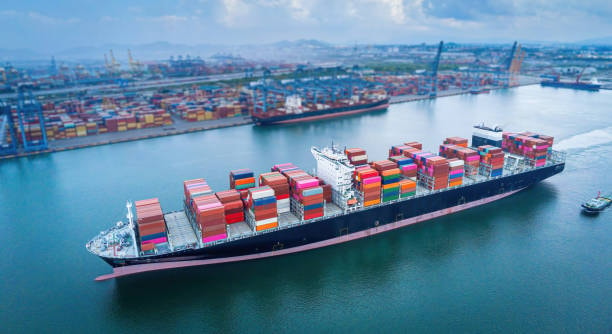
International maritime transportation constitutes the bones of the global trade, and port-to-port delivery durations, as indicated by a transit time calculator, are important element of supply chain scheduling and customer contentment. This can be done through being familiar with these timeframes that will help the businesses to make informed decisions, control the management of their inventory and ensure timely delivery of goods.
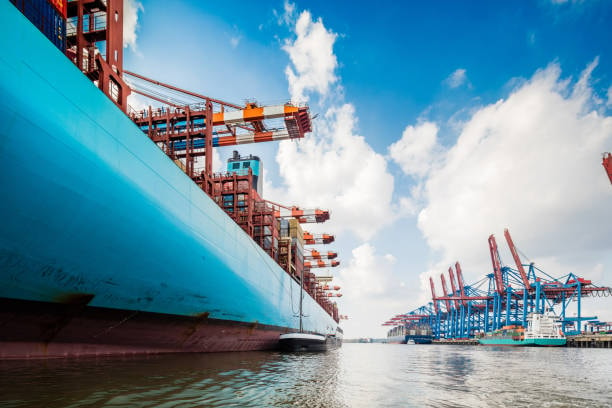
Shenzhen Guanwutong International Freight Forwarding Co.,Ltd. (GWT Worldwide) is a specialized logistics service supplier which focuses on global freight shipping, freight forwarding, supply chain services and cross-border E-commerce logistics. We are well established in the Chinese and the global market so we provide customized, cost-effective and reliable logistics services to enterprises across the globe. Our main services are Fret aérien & Sea Freight, China Europe Railway Transport, International Express & Courier Solutions, Custom Clearance and warehousing and Amazon FBA Shipping and Labeling Support. At GWT Worldwide we believe in efficiency, transparency as well as customer satisfaction, with advanced logistics technology and a strong network of trusted partners globally.
Understanding Port to Port Shipping Transit Time Fundamentals
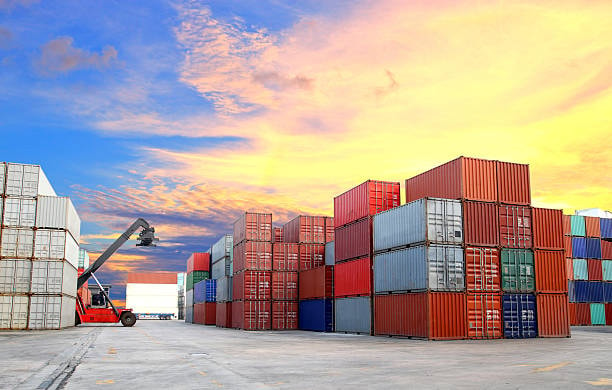
Port to port shipping transit time is a length of time that a cargo takes to move between the port of departure and destination port without taking into consideration pre-carriage and on carriage, as various factors affect transit time . This will specifically measure the ocean voyage leg of international shipping and this offers shippers with the much-needed data to design their plans.
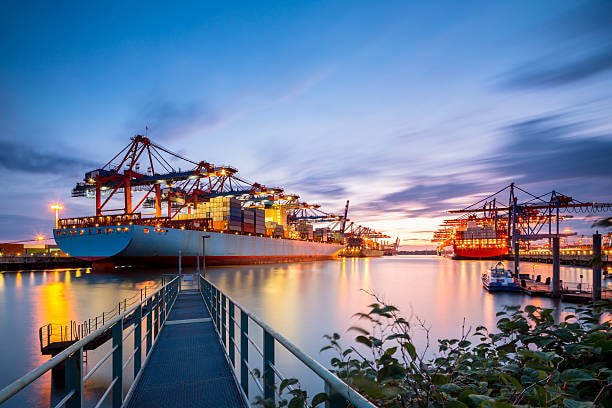
Accurate transit time calculations are important beyond mere scheduling. These estimates, particularly shipping time, are used by businesses in the forecasting of inventories, planning of production, and communication to its customers. Industries that are especially reliant on timing are automotive, electronic, and even fashion industries, as they are time-bound, and seasonally-based.
The time in transit heavily depends on various aspects such as shipping routes, vessel specifications, weather conditions and weight of port congestion. The main shipping routes such as Trans-Pacific, Asia-Europe and Transatlantic, all have a set baseline container ship transit times, which are used as industry standards to make planning.
Key Factors Affecting Maritime Shipping Duration

The most apparent element that determines transit times is distance, although the correlation does not necessarily hold true on a linear parameter. The passage of goods can not be in straight lines as there are geographical boundaries, political boundaries, adverse weather conditions, and patterns in the sea traffic which shape the route. An example is the Suez Canal, which links Europe with Asia; it saves a great deal in terms of distance as opposed to going around the Cape of Good Hope in Africa.
Ship specifications are important aspects in regard to speed and efficiency. Container ships can vary in size with small feeder but high speed craft with a speed of 12-15 knots to ultra large container vessels (ULCV) and speeds 20-25 knots. Nevertheless, big vessels might not fit in some ports or canals, which might worsen the need of adjustment in the routes and hence increase the time of the entire transit.

Weather conditions pose several anticipated changes of the season as well as inconvenient delays, which can be tracked using a shipping time calculator . The normal travel time can be increased by hours or even weeks depending on monsoons in Asia, Atlantic hurricanes and winter storms in the North Pacific. Weather routing systems with sophisticated technology are being used in modern shipping companies to reduce the effects of these damages whilst remaining safe.
Major Global Shipping Routes and Their Average Transit Times

Asia-North America corridor is among the busiest in the shipping routes of the world, and it takes approximately 12-16 days transiting along the west coast and 20-25 days along the east coast through the Panama Canal. These sea freight flights transport huge quantities of made goods, electronic gadgets, as well as consumer goods that circulate the centers of manufacture in Asia to the markets in America.
Asia Europe routes have several options and different times of transit. The conventional Suez Canal route takes average of 18-22 days against the longer Cape of Good Hope route, which takes 28-35 days. With recent changes Arctic routes are being operated, thus shortening the transit time to 15-18 days during the summer months, but weather dependency makes them unreliable.

Intra regional routes tend to have shorter transits with frequencies at a high rate. Asia-Australia services usually take 7-12 days whereas the European coastal services travel between 2-7 days depending on ports. Shorter routes usually have more certain scheduling as they are less affected by weather variation and political interferences.
Port Infrastructure Impact on Shipping Schedules
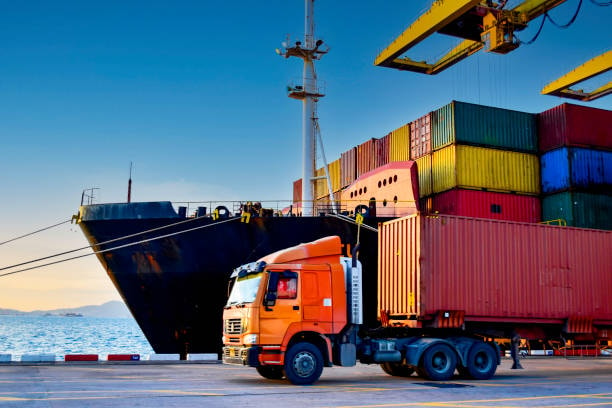
The reliability of overall transit time is in direct relationship with port efficiency and the effectiveness of port processing . Working container terminals containing automated cranes, modern yard management, and well-organized gate operations are capable of working much faster than older terminals. The world ports, such as Singapore, Shanghai and Rotterdam, are always listed as most efficient ports in the world, which has minimized dwell time and enhanced schedule reliability.
Berth availability poses a serious potential choke point such that the total transit times may take much longer than the sailing time. It may involve popular ports that have limited capacity and vessels waiting to be assigned a berth incur random delays into schedules that have been carefully planned. These issues are increased by the peak seasons and unscheduled surge of cargo, which complicates reaching the final destination.
Labor practices and port working hours also determine the processing times. Facilities with shift working exist 24/7 and also others which follow the conventional working hours which may prolong vessel stay. Becoming familiar with such patterns of operation allows shippers to choose ports of operation accordingly and plan timely delivery of goods.
Seasonal Variations in Ocean Freight Transit Times
During the peak shipping days, the transit times on all major routes are affected tremendously. Pre-Chinese New Year run is notable in the months of January-February with back-to school and holiday rush raising volumes between summer and early fall seasons especially to western markets. Such seasonal peaks can cause 2-5 days to be added on regular transit time with congestion during peak season and deviation of vessels into schedules.
Weather patterns establish expected seasonal changes which are factored by experts in shipping. Deviations in routes and closure in ports can result due to Pacific typhoon season (June-November), whereas the Atlantic hurricane season impacts services along the Caribbean as well as the Gulf Coast. The weather in Northern Europe and Great Lakes region in winter can temporarily put off some of the services or necessitate ice-breaker services.
Among the reasons are Chinese Golden Week holidays and the resultant concentrated shQipping periods as factories attempt to have all their orders in before holidays. Such shipping peaks cause pressure on port capacity and ship availability, and vessels can wait weeks on end around such events to earn a travel slot.
Container Ship Size and Speed Considerations
The new international shipping economics of the Ultra Large Container Vessels (ULCVs) of over 20,000 TEU capacity has brought timing considerations into the business. Although such giant vessels are economical in terms of the economies of scale, they can only operate in major hub ports with sufficient infrastructure which might also mean they pass through more transshipment processes that add on total transit times.
The optimization of vessel speed has taken on a significant change because of the cost of fuel and the environmental regulations. Most carriers are currently using slow steaming policies where they are operating slower vessels at 1820 knots as opposed to utilizing 2426 knots which are the maximum speeds. This saves fuel and emission, but adds 1-3 days into the transit on longer journeys.
The correlation between vessels size and port call efficiency is inconspicuously different. The smaller vessels can have more direct access of ports although they are more likely to require more stops whereas the bigger vessels are likely to require more feeder services to reach final destinations. In light of such trade-offs, shippers will have the knowledge to select the best service configurations.
Technology Solutions for Transit Time Optimization
The digital tracking systems have revolutionized how people know the whereabouts of vessels and their estimated arrival. The combination of historical data, real-time GPS tracking, weather information and port status allows real-time adjustments in ETA, which gives shippers an opportunity to adjust their schedules in advance. The systems diminish the level of uncertainty and allow inventory management to be more accurate.
Machine learning as well as artificial intelligence algorithms are also being used to assist in route optimization and schedule forecasting. These technologies use records of past data in terms of performance, weather and condition of the port for logistics planning to make recommendations related to the route and estimates of the transit time. Other systems foresee delays days in advance and corrective measures can be taken in advance.
Blockchain is becoming a solution to the effectiveness of documentation processing and customs clearance. These systems have the potential to decrease paper work and manual processes in freight transportation , thus leading to a reduction in dock times and generally predictable transit times even in complex multi-modal cargo shipments which have a significantly large amount of paper work.
Cost Implications of Different Transit Time Options
There is usually a 50-100 percent increase in cost between express shipping services and regular services although the decrease in time in major routes may be 3-7 days. Such upgraded services frequently use the services of higher vessels, priority in the handling of the port, and direct route in saving time. The premium on the cost can be charged to high value or time sensitive freight.
Consolidated shipping services are more economical and can expand transit time because of multiple port of call in cargo pick up and release. The cost-time trade-off enables shippers to choose the right level of services depending on the nature of cargo and the delivery requirements of its customers.
The fuel aggregate, seasonal rates modification can have a drastic effect on shipping prices as well as service choice. The peak and off-peak seasons can be more favorable to premium services because there are decreased congestion delays and economy services may be more favorable due to satisfactory transit time at lower prices, depending on the mode of transportation used .
Planning Strategies for Reliable Shipping Schedules
The setting up of buffer time is an important planning process in the context of effective supply chains. Industry best practice would be to allow a 15-25 percent safety margin on top of the standard transit times, which may vary depending on when making routine shipments, and even more so during seasonal times or during routes that generate high risks of disruption. This gives the advantage of keeping up the standards of customer services even within the unavoidable delays.
Various carrier options can enhance the section availability through backup service in event of delay on the main services. Flexible booking can be maintained as a result of having multiple carriers on major routes where they can know how to book the different routes depending on the prevailing conditions and capacity.
The communication policies with the customers must contain clear boundaries between port-to-port transit times and door to door delivery dates, particularly regarding the origin and destination . By creating proper expectations, dissatisfaction of customers is minimized and customer conflict is also lessened when they are assured that the international shipping process may be delayed due to unavoidable causes sea freight shipping.
Conclusion
Dealing with port-to-port transition time is complex, and one should address the issue of balancing the cost aspect and the aspect of service reliability with the flexibility to meet the changing conditions. Companies which engage in research of these complexities, deploy suitable use of technology, and generate effective planning strategies will earn competitive advantages in the current global business environment sea freight transit times. In terms of shipping either high-value electronics and bulk commodities it is necessary to ensure proper planning of transit time in order to be successful in supply chain management and satisfying customers.
